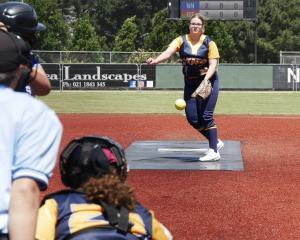
While being exceptionally good at a sport is indeed a prerequisite, there are several patterns inherent in these top performers that separate the best from the rest.
Dr Richard Young, of High Performance Sport New Zealand, outlined those patterns at the Otago Polytechnic Institute of Sport and Adventure's High Performance Sport Symposium yesterday.
Young highlighted seven habits that he said were common among New Zealand's Olympic medal winners and formed a unique way of thinking when compared with non-medallists.
Having a stable daily environment, proven support teams and clear routines helped ensure athletes had a clear mind.
Regularly seeking out high-quality competition allowed them to get used to doing things in tough situations, while being clear on event details ensured no surprises popped up that might throw them off their game.
Being healthy and uninjured came as a product of training ''smarter, not harder''.
Young said many non-medallists had the tendency to overtrain and injure themselves. The seventh habit, consistently wanting to learn to improve, was the key to linking them all together.
Medallists exhibited a ''growth mindset'', which regarded learning, effort and failure as important. Likewise, they were worried about far few factors than athletes outside the medal positions.
Accelerating the learning process and reducing the variables on an athlete's mind were key focuses for those looking to succeed, as were understanding what was influencing their habits so they could better control them.
Young presented a formula which showed an individual's beliefs determined their habits, which in turn influenced the quality of their actions. By exhibiting those seven habits, athletes were able to ensure their actions left them physically and mentally in top condition to compete.
Many athletes and coaches undertook briefings before and after events. Comparing what they had planned to happen with what actually happened, and why there was a difference, allowed them to effectively learn from experiences.
This could then be used by the athletes and coaches for their future campaigns, and passed to the next generation at a younger age, he said.
Greater awareness of these types of variables resulted in systems being put in place making athletes more consistent. The chances of upsetting the favourites for an event had plummeted in recent years.
Statistically speaking, at the 1976 Olympic Games, being in the world's top-16 made athletes a medal prospect. By 1988 that had shortened to the top 12, then to the top eight in 2000 and top five most recently.
Those outside the world top eight four years out from the Games were unlikely to win a medal, as were those outside the top three the year before.
There were, of course, exceptions, he said. Luuka Jones and Natalie Rooney both came from nowhere to win medals for New Zealand earlier this year in Rio.
That is where putting everything together when it mattered came in. As pressure increased, so did the likelihood an athlete would crack and having strategies to cope with that was key.











